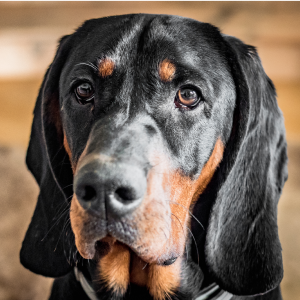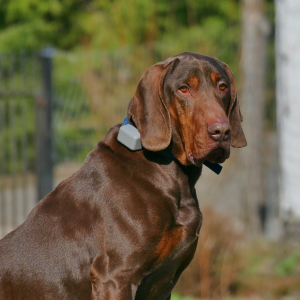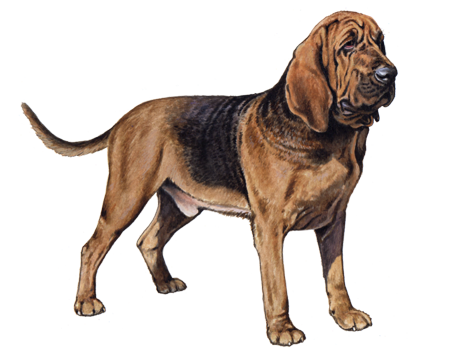
Polish Hunting Dog
The Polish Hunting Dog is an intelligent, alert scent hound. These energetic dogs have strong hunting instincts and are always game for outdoor adventures.
Interested in discovering if your dog is a Polish Hunting Dog?
Check out Wisdom Panel's DNA tests.

Polish Hunting Dog Traits
General Appearance
The Polish Hunting Dog is a medium-sized breed with a compact body and strong but not heavy bone structure.
Coat and Colouring
Polish Hunting Dogs have a short, shiny outer coat and abundant undercoat. The hair on their head and ears is soft, while their body hair is harsh to the touch. Their coat is black, chocolate tan-pointed, or rarely, red.
Distinctive Physical Traits
This breed has a noble head, oblique eyes that bear a kind expression, hanging triangular ears, a deep chest, and a slightly brushy tail that reaches the hock joint.
Polish Hunting Dog Temperament
Polish Hunting dogs are courageous hunters and gentle companions bred for working. They make devoted family pets but may be wary of strangers (a characteristic that makes them good watchdogs).
These energetic pups love spending time outdoors, where they get to use their keen sense of smell. However, because they are prone to following a scent, it's best to keep them on a leash or in an enclosed area.


Polish Hunting Dog History
Like many European hounds, the Polish Hunting Dog (or Polish scenthound) is thought to be descended from the St. Hubert Hound. These ancestral dogs were mainly brought to Poland from France and Italy, and written accounts of the Polish using them for hunting date back to the 13th century.
Two types of Polish hounds were documented to exist by at least the 17th century, a heavier “brach” and a lighter scent hound. During World War II, both types almost went extinct, but were rescued by breeding efforts in the 1950’s. Initially the larger Kartawik variety and the smaller Pawłusiewicz variety (both named after their respective breeders) were recognized by the FCI as a single breed: the Polish Hound or Ogar Polski. However, hunters continued to breed and preserve the smaller Polish Hunting Dog type as a working dog, and it was recognized as a separate breed 20 years later as the Gończy Polski.
The breed standard for today's Polish Hunting Dog is based on Pawłusiewicz's dogs, and is still favored by hunters for mountainous and challenging terrain.
Polish Hunting Dog Care
Nutrition
This breed thrives on high-quality dog food appropriate for their age, size, and activity level. To help them maintain a healthy weight, measure their meals to avoid overfeeding and keep treats to 10% or less of their daily calories.
Grooming
The Polish Hunting Dog's short coat requires only weekly brushing to keep it looking its best. Their hanging ears may make it harder to spot ear infections, so check their ears regularly and clean them if you see any wax build-up or debris. Additionally, nail trims and dental care should be part of their grooming routine.
Exercise
Polish Hunting Dogs need plenty of daily exercise to stay mentally and physically fit. They are working dogs that are not suitable for apartment living or the couch potato lifestyle. They love brisk walks, running, hiking, and swimming. They also enjoy games that allow them to show off their retrieving skills.
Training
This intelligent breed has a stubborn streak and can be challenging for inexperienced pet parents to train. For best results, establish yourself as the pack leader and use a consistent, firm training approach.
Additionally, all dogs benefit from early socialization. Helping them feel comfortable with different people and environments when they're young will help them grow into well-adjusted adult dogs.
Breed Group
Hound
The most common ancestral trait of this group is being used for hunting. Some use acute powers of scent to follow a trail while others demonstrate the gift of stamina as they run down a quarry. Beyond these two common traits, however, generalizations about hounds are hard to come by as the group is comprised of a very diverse lot of breeds.
Resources
https://www.fci.be/en/nomenclature/POLISH-HUNTING-DOG-354.html
https://www.psy.pl/rasy/gonczy-polski
Reviewed 12 July 2023 by Casey Knox, DVM












































